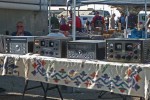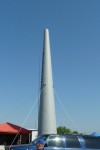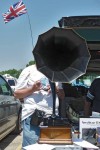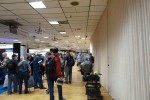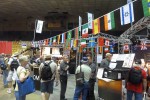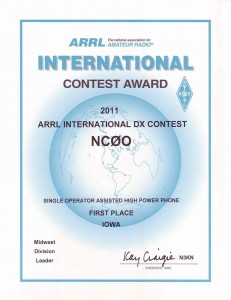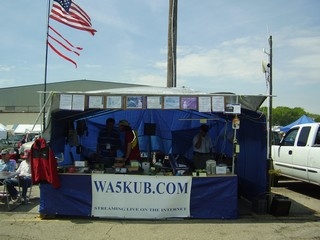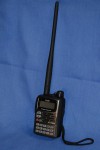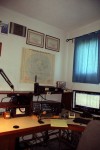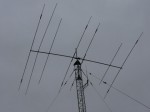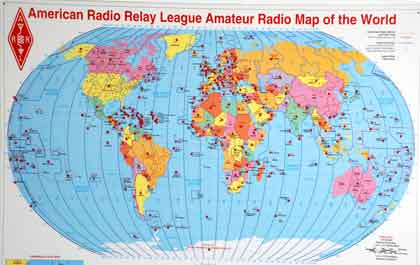 The Dayton Hamvention is the largest Ham Radio get-together in the in USA and possibly in the world. It goes on for three days every year along with many related events before and after.
The Dayton Hamvention is the largest Ham Radio get-together in the in USA and possibly in the world. It goes on for three days every year along with many related events before and after.
Here I am on a rented scooter, checking out some of the gear in the flea market
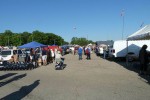 Here is a view of a small section of the flea market. Overall it covered acres. This is where the scooter was a very big help. Particularly when it got hotter later in the day
Here is a view of a small section of the flea market. Overall it covered acres. This is where the scooter was a very big help. Particularly when it got hotter later in the day
More radios from the 50’s and 60′. These are ones I drooled over as a kid.
Here I’m wondering how I could get one of these neat old radios home if I bought one Probably too much of an load to lug back to the bus/
Not only Amateur Radio gear was here but lots of broadcast equipment too. Here are a couple of old audio mixing boards.
When we went out to Dayton we traveled with a number of members of our local radio club, The EIDXA. We kept in touch via radio along the highways and could coordinate stops that way.
Here are fellow members Tom Vavra (WB8ZRL) and Jim Spencer (WØSR).
An inflatable antenna. Pretty impressive.
This old Edison phonograph was not for sale but seemed to be in great shape, in working order, and prized by the owner.
Not all serious stuff. Here is the Alien Biker Ham.
This is a view of the inside vendors displays. Later in the weekend it got a lot more crowded and I took to parking my scooter and walking to avoid running over someone in the crowd.
Here is one of the most popular booths, the one for ICOM radios. They were showing some newly released gear so it was quite popular and always busy.
 I never could figure out what the business model of this company was. A very unusual combination of things being sold.
I never could figure out what the business model of this company was. A very unusual combination of things being sold.
